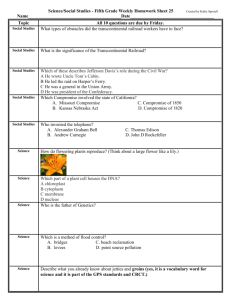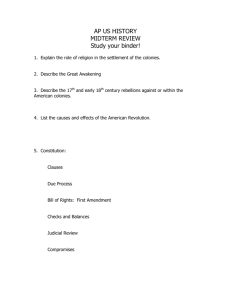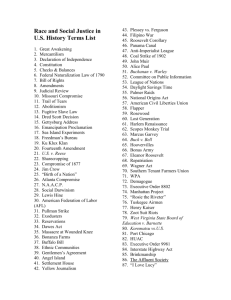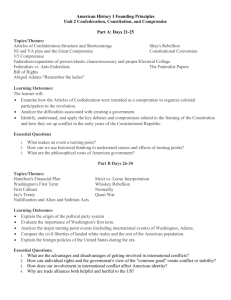Information Strategies for Optimization of the Composite Experiments Kertész
advertisement
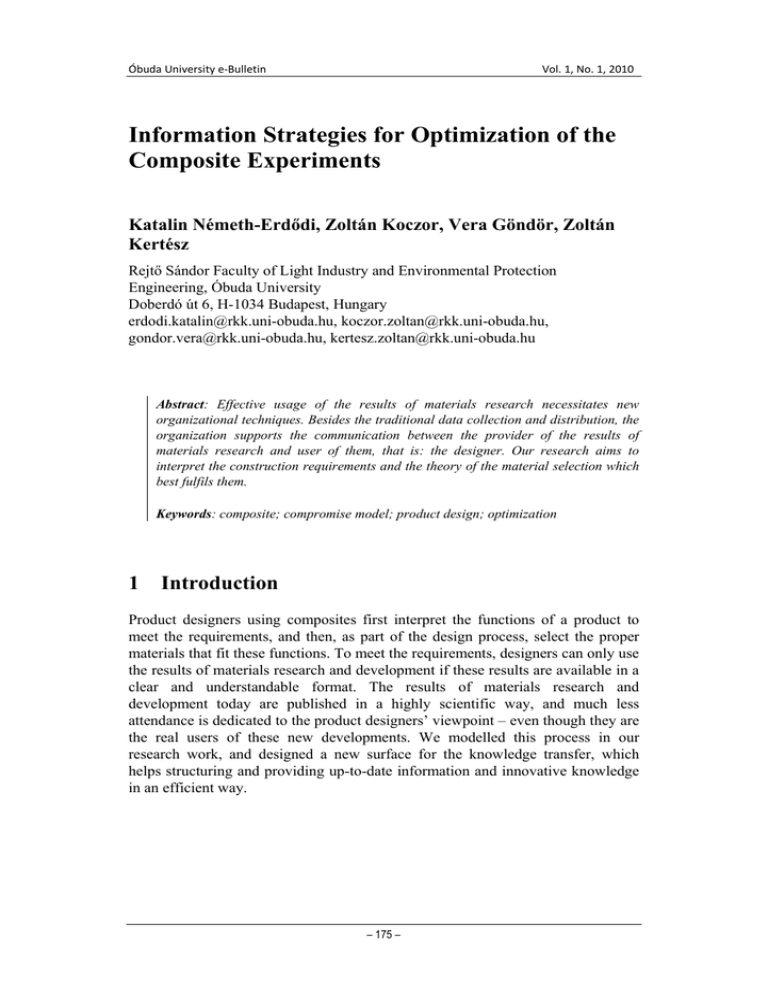
Óbuda University e‐Bulletin Vol. 1, No. 1, 2010 Information Strategies for Optimization of the Composite Experiments Katalin Németh-Erdődi, Zoltán Koczor, Vera Göndör, Zoltán Kertész Rejtő Sándor Faculty of Light Industry and Environmental Protection Engineering, Óbuda University Doberdó út 6, H-1034 Budapest, Hungary erdodi.katalin@rkk.uni-obuda.hu, koczor.zoltan@rkk.uni-obuda.hu, gondor.vera@rkk.uni-obuda.hu, kertesz.zoltan@rkk.uni-obuda.hu Abstract: Effective usage of the results of materials research necessitates new organizational techniques. Besides the traditional data collection and distribution, the organization supports the communication between the provider of the results of materials research and user of them, that is: the designer. Our research aims to interpret the construction requirements and the theory of the material selection which best fulfils them. Keywords: composite; compromise model; product design; optimization 1 Introduction Product designers using composites first interpret the functions of a product to meet the requirements, and then, as part of the design process, select the proper materials that fit these functions. To meet the requirements, designers can only use the results of materials research and development if these results are available in a clear and understandable format. The results of materials research and development today are published in a highly scientific way, and much less attendance is dedicated to the product designers’ viewpoint – even though they are the real users of these new developments. We modelled this process in our research work, and designed a new surface for the knowledge transfer, which helps structuring and providing up-to-date information and innovative knowledge in an efficient way. – 175 – K. Németh‐Erdődi et al. 2 Information Strategies for Optimization of the Composite Experiments The Characteristics of Knowledge Transfer Composites have special characteristics designed by or measured in the research process. These characteristics often interact in an opposing way when fulfilling several different functions. Researches define the characteristics according to varied parameters, but do not analyse the sometimes opposing output expectations. This is because material developers do not know the objective targets, that is: the final requirements of a future product, for which compromise characteristics are needed. We assume that “materials research” is separated from “construction”. Results of material experiments, however, can well be built into the design process if these results are properly provided. Proper introduction of newly developed materials can also contribute to their marketability. The design method raises the problem: what should be the adequate content and form of archivation, if we wish to provide value for the designers using composites. Defining the objective function (compromise model) according to the product designers demands, and optimizing the data according to this, gives us the ideal composite variation from the point of view of a product. The aim of our research is to optimize the product-to-be from the point of view of usage by modifying the input variables in practice. For this, we developed a computer model that can be applied to the optimal compromise, and a standard result publishing method. Machines, environment, method Development ideas, Method Technical culture, legal environment Measures, analysis, evaluation of importance Making the experiment plan variability parameters Results, connection Publication, offering of innovation SYSTEM OF DEMANDS, SPECIFICATION Operational mechanism Constriction demands, Selection of material solution opportunities Characteristics according to the experimental factors Accuracy and conformance level for several material characteristics Prototype, interaction evaluating Product design, definition of material parameters Usage test Validation Reliability, complaint data Solution choice Figure 1 The connection between materials research and the design process – 176 – Óbuda University e‐Bulletin 3 Vol. 1, No. 1, 2010 The Model of Information Flow between the Two Processes The designer defines the requirements for the whole life cycle of the product. He/she selects the materials on the basis of that, using the results of materials research. Materials researchers examine the production of the developed material by different settings, and publish the results as materials characteristics for these settings. For using the results, organised information collection is needed. Functioning often changes in a contradictory way by the variable input characteristics of the construction material. The expectation of the designers is to recieve the most suitable offer to fulfil the different, and sometimes contradictory, demands regarding materials. Defining the optimal level of input parameters is based on the compromiseoptimum (compromise function). These approaches are useful if inputs are variable and their effects on the outputs are known (usually from research experiments) or can be measured, so that the correlation analysis can give sufficient information. di Inputs Outputs Composite characteristics 1 d1 . . . . . . n dn 1 ; 0 Assessment by criteria Figure 2 A theoretical model for seeking compromise solutions The optimization method must take into consideration the weighted format and, at the same time, the functional changes at the inputs. The optimal design parameters can be defined on the basis of these two aspects. – 177 – K. Németh‐Erdődi et al. Information Strategies for Optimization of the Composite Experiments COMPOSITE MATERIAL DESIGN DEMANDS Usage characteristics at the beginning of life cycle Characteristics of components Volumetric rate of components Geometrical and structural indicators Long-term usage characteristics Limits and opportunities of the manufacturing Low production costs process Harmony with environment at the end of life cycle Interaction of components Figure 3 Case study for variable characteristics and the demands of a product 4 Application From the several purpose functions we chose Harrington’s desirability function for our case study. The optimal level of input can be defined by finding the maximum value of the harmonic average of the desirability function (compromise function). D( x ) = n d1 ( x ) ⋅ d2 ( x ) ⋅ d3 ( x ) ⋅ ⋅ ⋅ dn ( x ) , where D(x) - is the function to be optimized, containing a compromise regarding n number of customer demands, di(x) - is the function expressing the fulfilment of different customer demands, according to the modified designer parameters. From the D function calculated this way the optimal value of the design parameter can be defined, which regards contradictory customer demands. Limit from below / above: di = e − e − ( b 0 + b1⋅ y i ) Limit from both sides: di = e ni − ⎛⎜ y i* ⎞⎟ ⎝ ⎠ , y i* = 2y i − (y max + y min ) y max − y min The practical usage of the method is demonstrated by the following example. A, B and C are material characteristics defined by experiments, and their relation with variable parameters (e. g. glass fibre content, linear density of glass fibre) is known. – 178 – Óbuda University e‐Bulletin Vol. 1, No. 1, 2010 Characteristic "A" Characteristic „B" Variable parameter Characteristic „C" Variable parameter Variable parameter Figure 4 The results of materials research along a variable parameter We provide the compromise analysis of these relations in accordance with the designer’s demands. From the D function calculated this way the optimal value of the design parameter can be defined, as it is shown in the following figure. di, D 1,0 0,9 0,8 D 0,7 0,6 dA 0,5 0,4 0,3 dB 0,2 dC 0,1 0,0 -4 -2 0 2 4 6 8 10 12 14 16 18 Variability parameter Figure 5 Compromise function calculated from d functions with the optimal value of the design parameter The result of the optimization is a material parameter setting that fulfils the demands of the designer. The researcher has most probably never tried the material for that purpose system. The main elements of the information flow between material researchers and product designers are: − data collection about the material (sufficient structure and depth; database), – 179 – K. Németh‐Erdődi et al. Information Strategies for Optimization of the Composite Experiments − demand interpretation of the product designers, − finding the ideal material with ideal characteristics based on these data. Conclusions The research provides a new method of data dissemination, which makes possible the communication between material researchers and product designers, and the fulfilment of demands based on compromise analysis. We chose an evaluation method that suitable our case from the compromise analyses mentioned in related literature. The different methods can be well automated in a relevant standardized communication framework. References [1] Réthy, Zs.; Koczor, Z.; Erdélyi, J.: Handling Contradicting Requirements Using Desirability Functions, Acta Polytechnica Hungarica IV (2004) pp. 5-12 [2] Derringer, G., Suich, R.: “Simultaneous Optimization of Several Response Variables”. Journal of Quality Technology Vol. 12, No. 4, 1980, pp. 214219 (1980) [3] Némethné Erdődi, K.; Tóth, T.; Kokasné P., L.: Anwendung einer auf Kompromiss der Kundener-wartungen basierenden Prüfungsmethode in der Praxis der Produktplanung von Maschenwaren, Proceedings of IFKT Congress, Zágráb (2003) [4] Koczor, Z. (alkotószerk.): Minőségirányítási rendszerek fejlesztése, TÜV Rheinland interCert (2006) [5] Harrington JR., E.C.: The Desirability Function, Industrial Quality Control 21 (1965), pp. 494-498 (1965) [6] Göndör, V.; Pataki, M.: Designing Textile Products for the Full Life Cycle with a Special Focus on Maintenance during Usage, New aspects in the Innovation of a Traditional Industry, 35 Years of Higher Education and Research in The Light Industry, pp. 129-138 (2007) [7] Kertész, Z.: „Optimization by Compromise Model” softver made by Z. Kertész (2005) – 180 –
